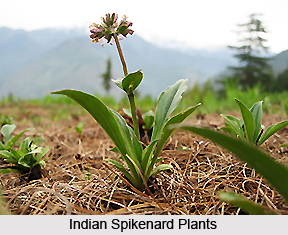This drug is one of the first 12 drugs mentioned in the earliest European medical work, `Pharmacoepea` of Hippocrates, and has been in use in India for over 3,000 years. It is an exceptional alternative for the drug, Velerian, botanically known as Valmana.
 Methods of usage
Methods of usage
Indian spikenard cures and lessens the effect of several chronic and painful diseases, like nervous disorder, respiratory disorder, palpitation, troubled menstruation.
Healing Power and Medicinal Properties of Indian spikenard
The root of the plant is perfumed, stimulating, sour tonic and antibacterial. It is useful in counterbalancing convulsive disorders, and facilitates secretion or excretion by the natural passages or pores of the body, together with urine.
Nervous and Convulsive Disorders cured by Indian spikenard
Jatamansi can be used in the cure of various nervous and convulsive disorders like hysteria, epileptic fits, and specific disturbances caused by menopause. When administered in pretty small dosages, it comforts the nervous system and acts as a tranquilliser.
Intestinal Worms cured by Indian spikenard
The drug is useful in treating intestinal worms. It can be prescribed to children with a laxative like jalap. For the treatment of threadworms, an enema made of a concoction of the rhizomes can also administered.
Respiratory Disorders healed by Indian spikenard
Jatamansi can be used in the cure of bronchitis and other troubles of the respiratory system. Dosages of 30 to 40 grains with the addition of a little camphor and cinnamon can be consumed It can also be had as a concoction in dosages of 30 to 60 grams, thrice daily.
Menstrual Disorders healed by Indian spikenard
The herb assists in menstruation and regularises the menstrual cycle. It is especially useful in dysmenorrhea - i.e., painful and complicated menstruation.
Palpitation of the Heart healed by Indian spikenard
It is a good cardiac stimulus, and thus useful in treating palpitation of the heart.
Low Blood Pressure cured by Indian spikenard
Research has proved that it helps in the treatment of low blood pressure, nervousness and irregular pulse.
Other Uses of Indian spikenard
Hair Tonic - Jatamansi is a well-known hair vitaliser. It is a significant constituent of numerous hair washes and hair oils.
Composition
Indian spikenard, also known as Indian vallerine, is a perpetual herb, growing upto 60 cm. It has long, woody rhizomes, or an underground stem producing roots covered with fibres and small clusters of blanched, pink or blue flowers. The dried rhizomes and roots of this plant make up the drug. The Indian name `jatamansi` pertains to the bearded appearance of rhizomes.
The plant occurs on alpine Himalayas, principally at higher altitudes of 3,000 and 4,500 metres, extending eastward from Kumaon to Sikkim and Bhutan.
Indian spikenard yields an essential oil, which contains an unknown ester, an alcohol and two alkaloids. The rhizomes of the plant contain jatamawi acid, and a volatile oil, which has the same uses like the rhizome. As a fragrant, it is a component of many curative preparations.



















